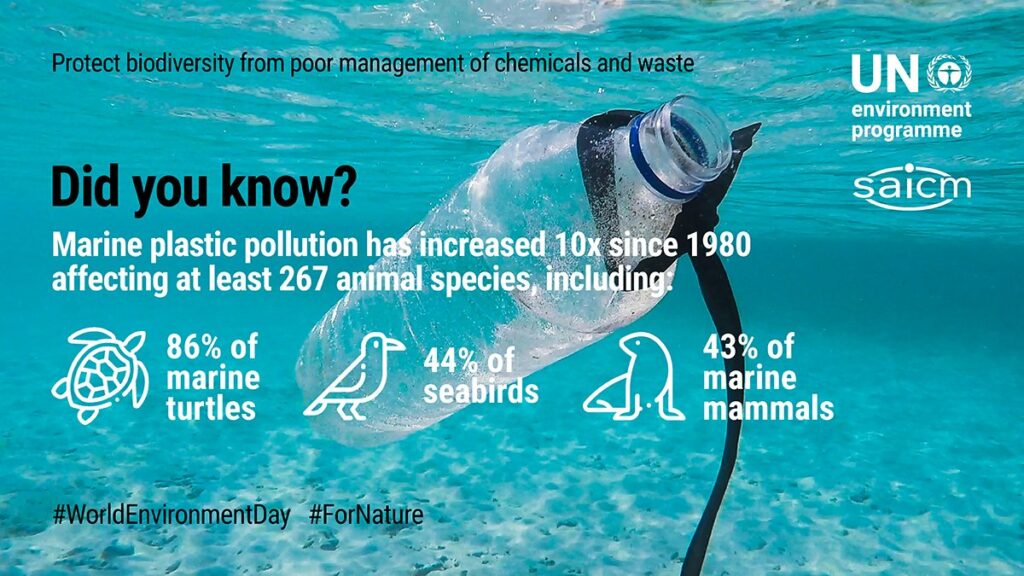
Natural Resources Conservation Service (NRCS) and Sustainable Development Goals (SDGs)
The Natural Resources Conservation Service (NRCS), operating under the mission of “Helping People Help the Land,” plays a pivotal role in promoting sustainable management of the Nation’s soil, water, and related natural resources on non-Federal lands. By providing both technical and financial assistance, NRCS empowers land managers and communities to adopt comprehensive strategies for conservation and sustainable use of natural resources across rural, suburban, urban, and developing areas.
Alignment with Sustainable Development Goals
NRCS’s initiatives directly contribute to several United Nations Sustainable Development Goals (SDGs), including:
- SDG 2: Zero Hunger – Supporting sustainable agriculture through soil and water conservation.
- SDG 6: Clean Water and Sanitation – Protecting water resources via conservation practices.
- SDG 13: Climate Action – Enhancing resilience to climate-related disasters and promoting sustainable land management.
- SDG 15: Life on Land – Conserving terrestrial ecosystems and biodiversity through sustainable land stewardship.
Disaster Assistance Programs Overview
In response to natural disasters, the United States Department of Agriculture (USDA) offers a range of disaster recovery assistance programs designed to support affected farmers, ranchers, and landowners. These programs align with the SDGs by fostering resilience and sustainable recovery in agricultural and natural resource sectors.
Key Features of USDA Disaster Assistance
- Comprehensive Support: USDA collaborates with multiple agencies to provide diverse assistance options tailored to specific disaster situations.
- Accessibility: Information and resources are available through farmers.gov and local USDA Service Centers.
- NRCS Disaster Recovery: Specialized support for conservation and natural resource recovery is provided via the NRCS Disaster Recovery program (link).
NRCS Conservation Programs and Technical Assistance
NRCS offers voluntary, science-based conservation programs that benefit both landowners and the environment. These programs are designed to support sustainable land use and contribute to the achievement of SDGs by promoting responsible stewardship of natural resources.
Services Provided by NRCS
- Free Technical Assistance: Including resource assessments, conservation practice design, and resource monitoring.
- Financial Assistance Guidance: Conservation planners assist landowners in determining eligibility and suitability for financial support.
- Targeted Support: Services are tailored for farmers, ranchers, and forest landowners to conserve soil, water, air quality, and other natural resources.
Contribution to Sustainable Development
By enabling sustainable management practices, NRCS supports:
- Improved agricultural productivity and food security (SDG 2).
- Protection and sustainable use of water resources (SDG 6).
- Mitigation of environmental degradation and climate change impacts (SDG 13).
- Preservation of biodiversity and ecosystems (SDG 15).
NRCS’s integrated approach ensures that conservation efforts contribute to long-term environmental health and community resilience, advancing the global agenda for sustainable development.
1. Sustainable Development Goals (SDGs) Addressed
- SDG 2: Zero Hunger
- The article discusses support for farmers and ranchers, which relates to sustainable agriculture and food security.
- SDG 6: Clean Water and Sanitation
- NRCS’s focus on conserving water resources and soil aligns with ensuring availability and sustainable management of water.
- SDG 13: Climate Action
- Disaster assistance programs and conservation efforts contribute to resilience and adaptive capacity to climate-related hazards.
- SDG 15: Life on Land
- Conservation of soil, water, air, and natural resources supports sustainable use of terrestrial ecosystems.
2. Specific Targets Under Those SDGs
- SDG 2: Zero Hunger
- Target 2.4: By 2030, ensure sustainable food production systems and implement resilient agricultural practices.
- SDG 6: Clean Water and Sanitation
- Target 6.6: Protect and restore water-related ecosystems, including mountains, forests, wetlands, rivers, aquifers, and lakes.
- SDG 13: Climate Action
- Target 13.1: Strengthen resilience and adaptive capacity to climate-related hazards and natural disasters in all countries.
- SDG 15: Life on Land
- Target 15.3: Combat desertification, restore degraded land and soil, including land affected by desertification, drought, and floods.
3. Indicators Mentioned or Implied in the Article
- Indicator for SDG 2.4
- Number of farmers and landowners adopting sustainable agricultural practices through NRCS technical and financial assistance.
- Indicator for SDG 6.6
- Area of water-related ecosystems conserved or restored via NRCS programs.
- Indicator for SDG 13.1
- Number of disaster assistance programs implemented and number of beneficiaries receiving support after natural disasters.
- Indicator for SDG 15.3
- Extent of land area where soil and natural resource conservation practices have been applied or improved.
4. Table of SDGs, Targets, and Indicators
| SDGs | Targets | Indicators |
|---|---|---|
| SDG 2: Zero Hunger | Target 2.4: Ensure sustainable food production systems and implement resilient agricultural practices by 2030. | Number of farmers and landowners adopting sustainable agricultural practices through NRCS assistance. |
| SDG 6: Clean Water and Sanitation | Target 6.6: Protect and restore water-related ecosystems. | Area of water-related ecosystems conserved or restored via NRCS programs. |
| SDG 13: Climate Action | Target 13.1: Strengthen resilience and adaptive capacity to climate-related hazards and natural disasters. | Number of disaster assistance programs implemented and beneficiaries supported after natural disasters. |
| SDG 15: Life on Land | Target 15.3: Combat desertification and restore degraded land and soil. | Extent of land area where soil and natural resource conservation practices have been applied or improved. |
Source: nrcs.usda.gov







